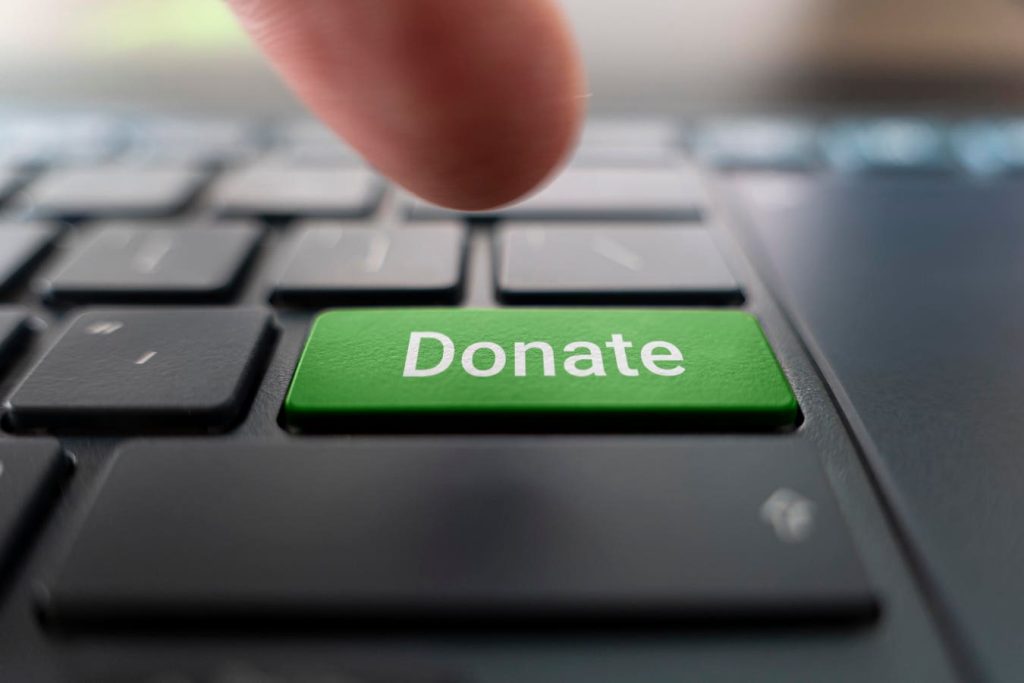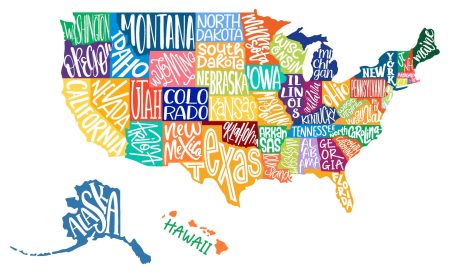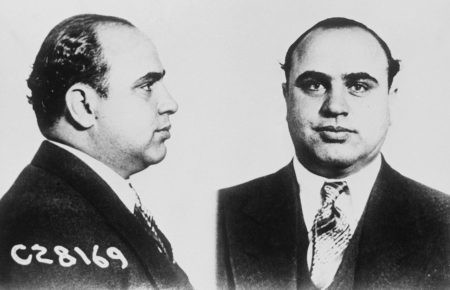Your motivation to make both charitable donations and smart tax-planning decisions led you to set up a donor-advised fund (DAF), which may now be brimming with money. DAF gifts (called “grants”) have become a key source of funds for charities and other nonprofits.
The workings of DAFs, their tax benefits for you, and the timing flexibility they provide for financial contributions are discussed extensively elsewhere on the internet. This article looks at the hard part that is often not talked about: how do you decide when it makes better financial sense to donate directly with the DAF rather than by credit card, check, stock, or Venmo?
Huge Growth In DAF Assets
The assets in DAFs have grown substantially. According to a report from the National Philanthropic Trust, DAFs now hold nearly $230 billion in 2 million accounts. The publication The Chronicle of Philanthropy reveals that this growth in DAFs is changing charitable giving in many ways—though not all of them are positive, as discussed in an article from The Boston Globe.
Example Of Major DAF Giving And Growth
The Pan-Mass Challenge (PMC), a cycling event held every summer in Massachusetts since 1980, now raises more money for charity than any other single athletic fundraising event in the world. The PMC bicycle fundraiser for the Dana-Farber Cancer Institute in Boston will reach $1 billion in donations this year with its 2024 event, to be held the first weekend in August. With a 25% increase in DAF gifts as of May 31, 2024, over 60% of the PMC’s fundraising growth this year has come from DAF giving, according to Michele Sommer, the CFO of the PMC.
Disclosure: This summer will be my 36th straight year and my wife’s 33rd year of riding in and raising funds for the PMC.
New tools have been developed to make grants from DAFs faster and simpler than ever. These include DAFpay, which can be embedded in online donation forms. It allows donors to select from a list of DAF sponsors to make contributions. I tested DAFpay with a donation to my son’s upcoming 1st PMC ride. It required fewer keystrokes than entering in my credit-card information and was as easy as using PayPal.
Quick Tax Review Of DAFs
When you make a donation to a DAF, that amount is eligible for the charitable deduction on your tax return without the need at that point (or perhaps ever) to pick the nonprofits receiving the funds. When you’re making a very large cash donation to a DAF (or to any charity directly), understand that the tax deduction is limited to 60% of your adjusted gross income (AGI) per year, and you can carry forward what’s not used on that year’s tax return for five years.
A DAF donation reduces your taxable income for the year. Depending on your tax bracket, the DAF donation can therefore lower your taxes, assuming the total of your itemized deductions on Schedule A of your Form 1040 tax return (includes charitable donations) is higher than the year’s standard deduction that everyone gets. (In 2024, the standard deduction is $14,600 for single filers and married couples filing separately, and it is $29,200 for married joint filers.)
Related strategies that financial advisors suggest include using a DAF to consolidate or bunch donations into one year to maximize your itemized deductions. DAF donations are also an effective strategy for tax planning in years when you have a big income increase that would otherwise push you into a higher tax bracket. Common sources of an income spike include a vesting of restricted stock units (RSUs) from your employer, a Roth IRA conversion, or a sale of your company.
Basic DAF Gifting Rules
Donations to DAFs are irrevocable. While the money invested in your DAF account accumulates free of tax, you may not extract any funds from the DAF for personal use.
However, having a DAF does not impose any legal pressure on you to make grants from it. Unlike private foundations, which under IRS rules must distribute 5% of their net asset value per year, you have no legal requirement to make gifts from a DAF. Private foundations can also count DAF contributions towards the 5% of net assets they must annually distribute, and they can convert to a DAF under a legal process—one reason for the huge growth in DAF assets.
This lack of a rule for minimum DAF payouts has its critics. However, the IRS and Congress have shown little desire to require mandatory grants from DAFs.
While the law does not require you to make grants from your DAF, some DAF providers or sponsors—such as Fidelity Charitable, Vanguard Charitable, Schwab Charitable (now DAFgiving360), and National Philanthropic Trust—do have minimal mandates for regular grants.
For example, under the rules of my DAF at Fidelity Charitable (a former client of my company), you need to make a grant at least once every two years. Otherwise, Fidelity Charitable will make a donation from your Giving Account equal to 5% of the assets in it. After the first year of inactivity, Fidelity Charitable contacts the account holder to encourage grant recommendations.
Let’s look at seven reasons to use your DAF to make grants to charities and other nonprofits.
1. Dedication To Charitable Giving
Presumably, you set up your DAF mostly because you are generous and charitably inclined, not just for tax reasons, so you now need to hold yourself accountable to thoughtful use of the funds. After you have contributed money to the DAF, you will want to focus on how much to grant from it and to which nonprofits.
“You’ve already made your personal budgeting and tax decision on how much to put into your DAF,” explains Mitch Stein, Head of Strategy at Chariot, the company behind DAFpay. “Now’s the time to experience the joy of giving and focus on how you want to allocate the funds in your DAF to causes or organizations you believe in.”
“When giving from your DAF, you are able to support the organizations you love with money already set aside for philanthropic giving, with zero impact on your cash or credit-card payments,” emphasizes Karyn DeMartini, VP of Principal & Planned Giving at the March of Dimes.
The large amount of ungranted funds sitting in DAFs can be frustrating for nonprofits that need funding. The 2024 National Study On Donor-Advised Funds found that 22% of DAF accounts did not make any grants during the prior three years. In an average year during that period, 37% made no grants, and the median payout for all DAF accounts was 9% (15% after removing inactive accounts).
To encourage you to make DAF grants, an organization called #HalfMyDAF offers matching funds to donors who commit to spending down at least half of their DAF accounts each year. Its website has the details on the process and the deadlines for matching donations.
Jennifer Risher (author, speaker, and former Microsoft product manager) and her husband David Risher (the current CEO of Lyft) founded the #HalfMyDAF matching program. “We created the #HalfMyDAF matching program to inspire donors to put their money to work now, when it can do the most good,” says Ms. Risher. “Along with our partners, we have moved over $58 million from DAFs to nonprofits over the past four years.”
2. Better Organization And Tracking
When you make numerous donations in any year, whether small or large, it can be challenging to keep track of all the recipients and avoid duplication. To help you organize your gifting, most DAF providers have a website dashboard that lets you see in one place all the grants you have made.
3. No Credit-Card Fees
When you give with a DAF instead of a credit card, you’re saving the nonprofit anywhere from 3% to 5% in total fees charged by its credit-card processor (unless you gross up your donation). Venmo too has fees, though they are lower.
4. Maxed Out On Tax-Deductible Donations
Donations coming from your DAF do not give you a tax deduction, as would a direct donation to a charity by credit card, check, or Venmo. You already received the tax deduction when you contributed to the DAF.
If you know already that you’re going to hit your goal for the year in tax-deductible donations—perhaps via putting more money into your DAF, by some other big direct donation to a charity, or through setting up a charitable-type trust—then use the DAF to make the donation.
5. Smoother For Stock Or Complex Assets
DAFs can quickly handle and liquidate stocks and other assets more efficiently than many nonprofits can. Let’s say you have low-tax-basis stock in Nvidia, Apple, Alphabet (i.e. Google), or Tesla that you bought years ago and has since rocketed upward in value. You may want to donate the shares, as selling them would trigger significant capital gains tax.
You can donate the stock to the DAF for the tax deduction at its current share price and then use the funds in the DAF to make the donation. For donations of appreciated stock you have held long-term, the tax deduction is limited to 30% of your adjusted gross income (AGI) per year, but you can carry forward the unused portion on your tax return for five years.
6. Attention And Preferential Treatment…
When you use a DAF and the charity is aware of the donor behind it, the grant sends a signal that you’re a valuable philanthropist who enjoys giving to the organization’s cause. That can result in special invitations and attention.
7. …Or Total Anonymity
Grants from your DAF can go to any qualified charity in the US or abroad. You can set up the DAF with any name and title, and you can usually change those whenever you want by simply submitting a form. Grants from the DAF can therefore be anonymous or at least not associated with you personally.
If you are concerned that the charity you are giving to could be perceived by some people or your employer as controversial, using the DAF can mask your identity. It’s also a way to prevent the charity from sharing your personal contact information with other charities. The lack of transparency with DAFs is another area of potential legal change, though that is unlikely in the near future.
Read the full article here












